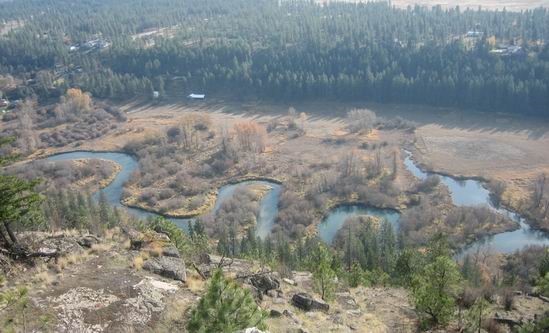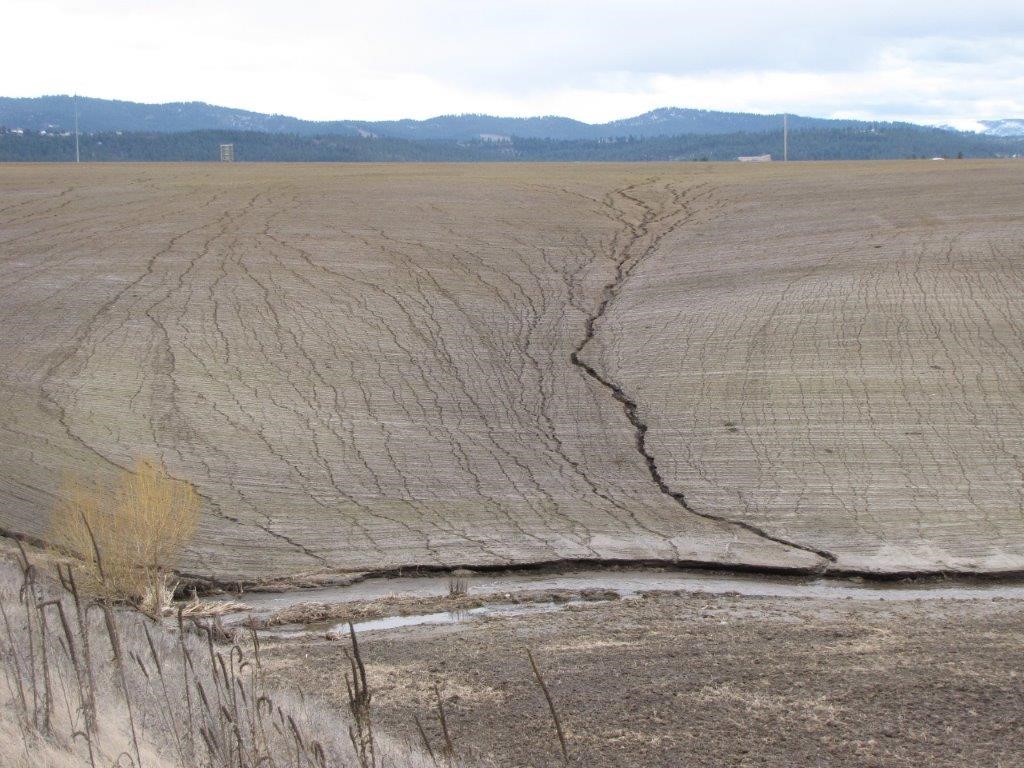
Plans to improve the health of the Little Spokane River and its tributaries are now available for public feedback. Our draft water quality improvement plan aims to address two issues in the river — low dissolved oxygen and high pH levels.
Planning for clean water
The goal of the water quality improvement plan, formally known as a Total Maximum Daily Load or TMDL, is to identify water quality and riparian habitat improvements needed to support aquatic life and recreational uses in the Little Spokane River watershed. Once finalized and implemented, this plan should lead to more functional habitat for mountain whitefish, redband trout, and other species, and ensure safe swimming, fishing, and boating.
In drafting our plan, we used the best available water quality data and worked in the watershed to establish implementation partners who will help us get to clean water. Implementation partners include the Spokane Tribe, conservation districts, local health departments, local governments, other state agencies, non-profit organizations, and Washington State University Extension.
Phosphorus pollution can lead to low oxygen levels in the water, depriving fish like these mountain whitefish of the oxygen they need to thrive.
The draft plan includes recommendations to protect water quality from polluted run-off related to different land uses in the watershed. Historical resource extraction practices, development pressures, and detrimental land management practices have left their mark on water quality in the watershed. Issues such as unmanaged stormwater runoff, sedimentation, riparian vegetation losses, streambank erosion, wetland losses, and agricultural and forestry management are addressed in the plan.
“Cleaning up the Little Spokane River, and putting a plan in place to keep it clean, will take the commitment of many partners in the watershed”, said Chad Atkins, Ecology’s Watershed Unit Supervisor for Eastern Washington. “We expect the watershed to continue to see development, which could lead to pollution if we don’t do this work now. Fortunately, we have a great partners and I think we are already seeing progress in the watershed.”
An important component of the draft plan is the conditions for permitted dischargers, including strict phosphorus limits requiring permitted dischargers to install new technology, make facility improvements or take other actions to do their part to improve water quality.
There is only one large permitted discharger — the Spokane Fish Hatchery — which is operated by the Washington Department of Fish and Wildlife (WDFW). The total phosphorus contribution of the hatchery is quite small most of the year, representing approximately 2% of the pollution at the mouth of the river during the winter and spring. However, during the summer months when there is far less flow in the river, the hatchery’s total phosphorus contribution can be as high as 29%. Hatchery improvements listed in the plan, such as water recycling and filtration upgrades, settling ponds, and use of low-phosphorus fish feeds, could result in a 40% reduction in waste the hatchery is discharging into the river. WDFW is one of our implementation partners and we are continuing to work with our fellow state agency on a plan for the necessary improvements.
The other permitted dischargers in the Little Spokane River watershed are the Colbert landfill, Spokane Recycling (formerly Kaiser Mead Works), and Spokane County Municipal Stormwater.
The problem with phosphorus
It is not uncommon for dissolved oxygen and pH issues to occur at the same time. In the case of the Little Spokane River, we have the combination of not enough shade, which means warmer water, and too much phosphorus. Under natural conditions, phosphorus is generally in short supply. Unfortunately, human activities are leading to phosphorus pollution in the Little Spokane River. Landscapes without enough vegetation can lead to spring rainfall runoff scenes like this on the Little Spokane River.
As phosphorus enters a waterbody, it fertilizes the aquatic system, fueling excess plant and algae growth. As these excess plants die and decompose, they use up oxygen. This leads to low dissolved oxygen in the river, meaning there is not enough oxygen for other living creatures, such as fish, to thrive. This is bad not only for the aquatic life in the Little Spokane River, but also for the downstream water, the Spokane River, and Lake Spokane. Excess nutrients like phosphorus can also lead to issues with high pH levels in the water. Additional causes of high pH includes sediment pollution from soil eroding into streams due to timber harvest, poor farming practices, and suburban development. Following best management practices can prevent sediment pollution.
The Little Spokane River also fails state water quality standards for bacteria, temperature, and turbidity. We completed a water quality improvement plan in 2012 to address those problems. The recommendations in this draft implementation plan are designed to continue to make progress on those water quality problems as well.
Next steps
The draft water quality improvement plan and information on how to comment can be found on our TMDL webpage. Comments can be submitted online or in writing through Nov. 12, 2020.
After public review and comment, we will consider and respond to the comments, finalize the plan and submit it to EPA for approval by the end of this year.
We are holding an online informational workshop to discuss the draft plan.
Workshop: Oct. 20, 2020 6 p.m.
Register for the webinar
Tips for attending the event
While not required, we recommend that you register in advance using the registration link. This helps make sure you have any needed software updates taken care of early so you may participate on time.
Here are some other things you may find helpful:
- We recommend you use the Google Chrome browser when signing in.
- Plan to join us 15 minutes or so before the event begins, around 5:45 p.m.



